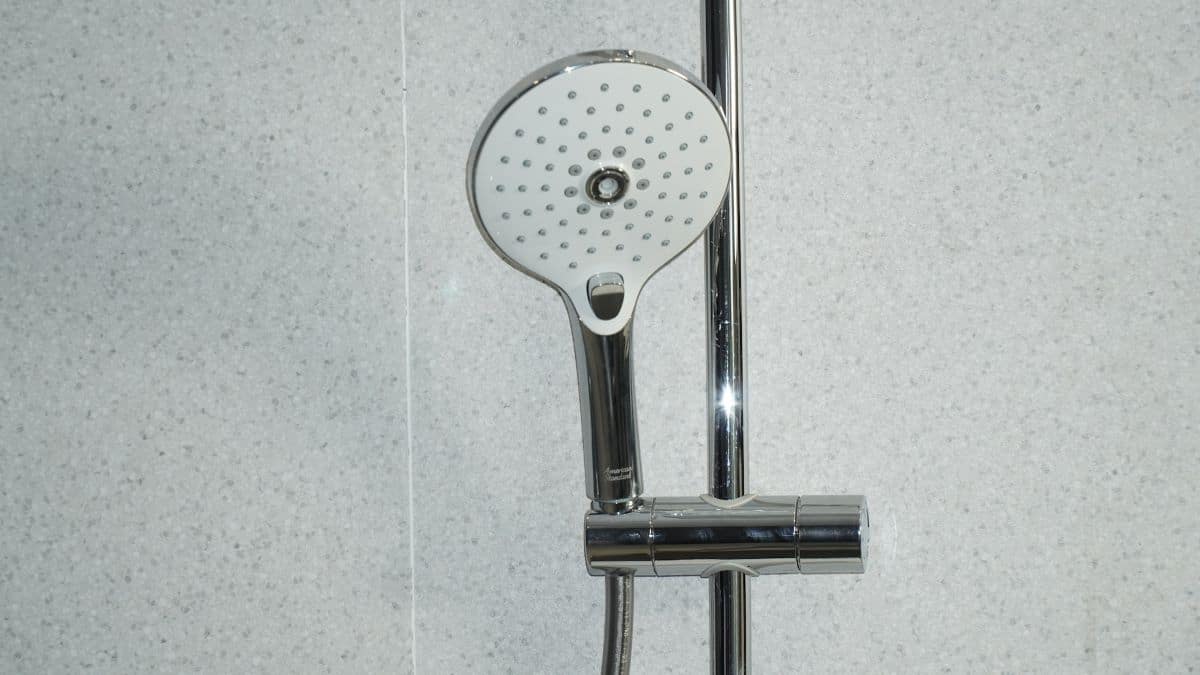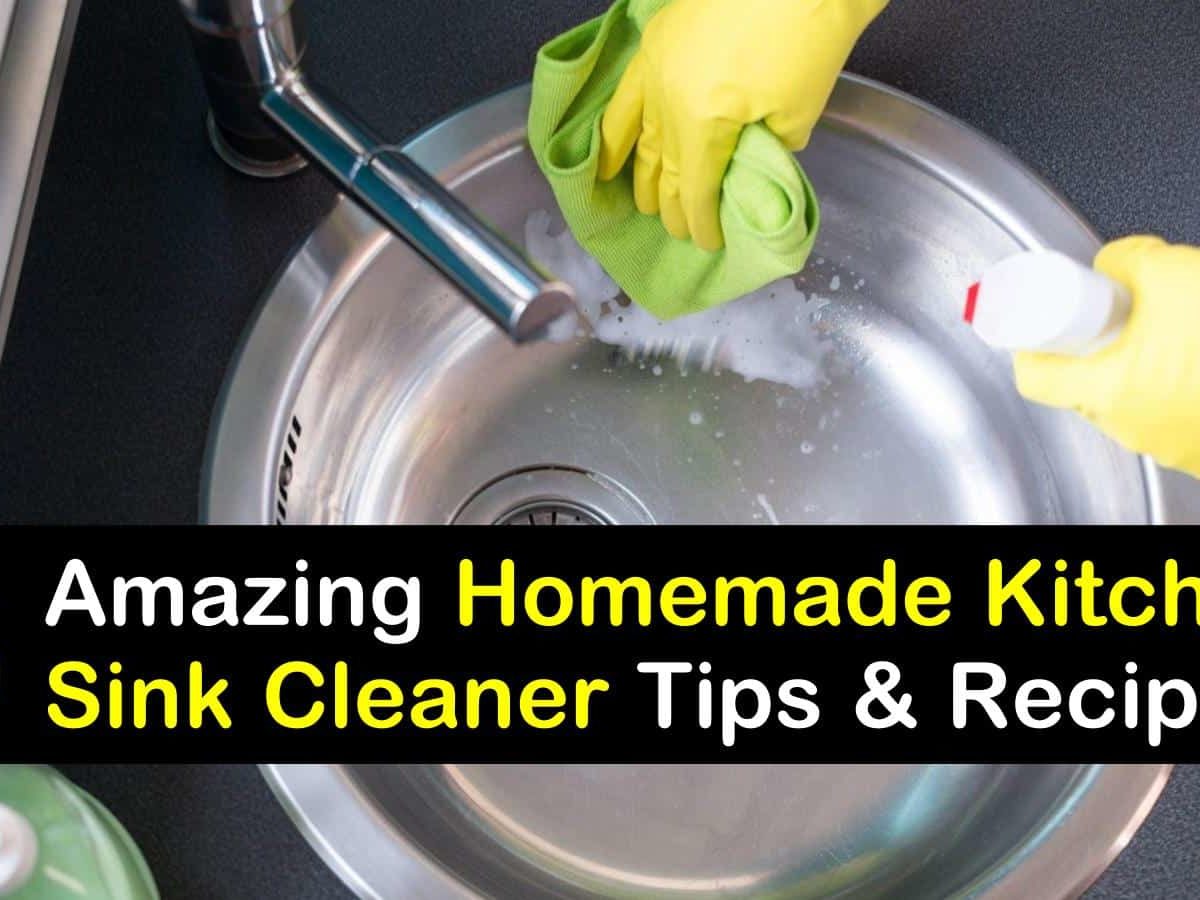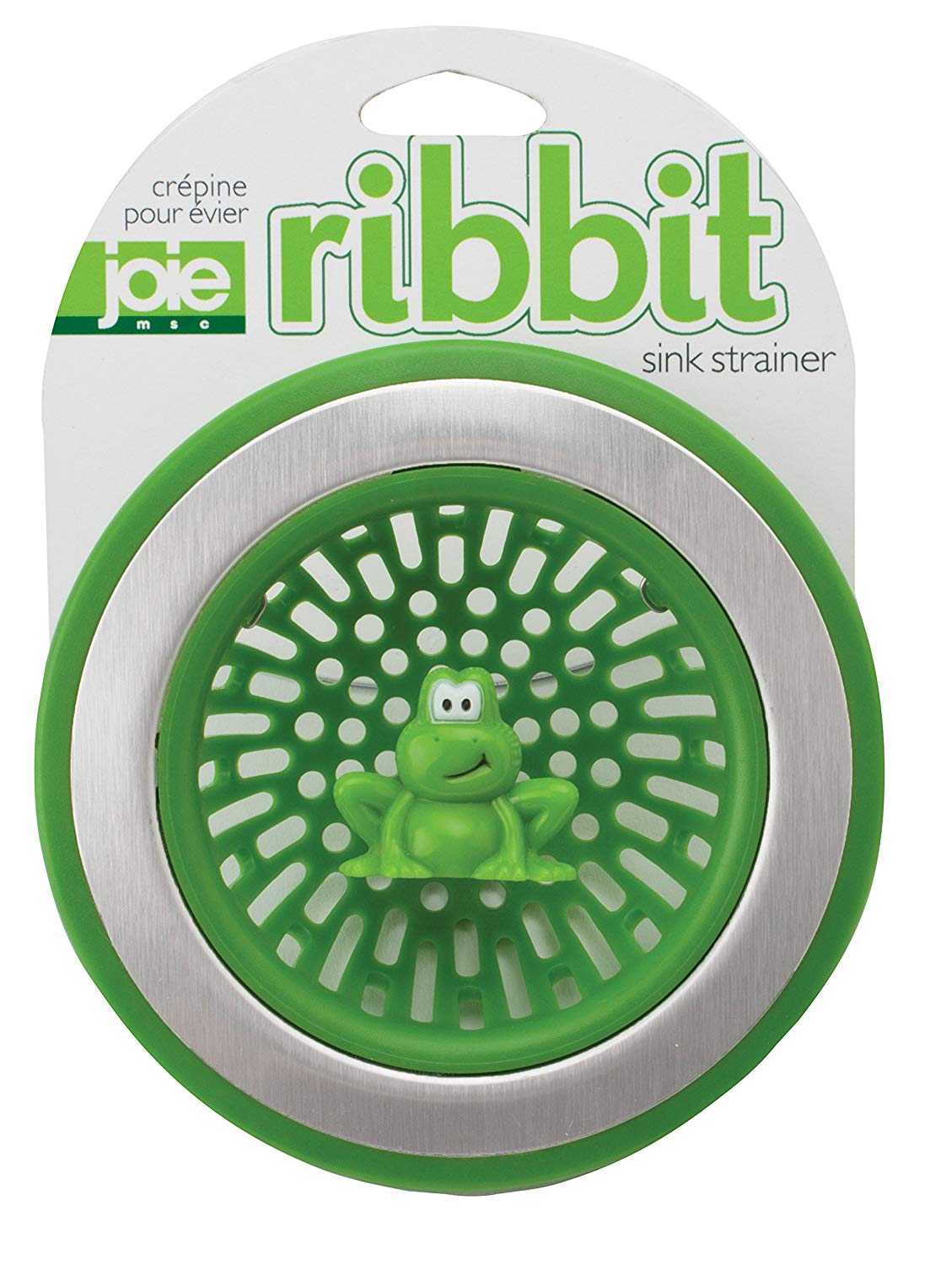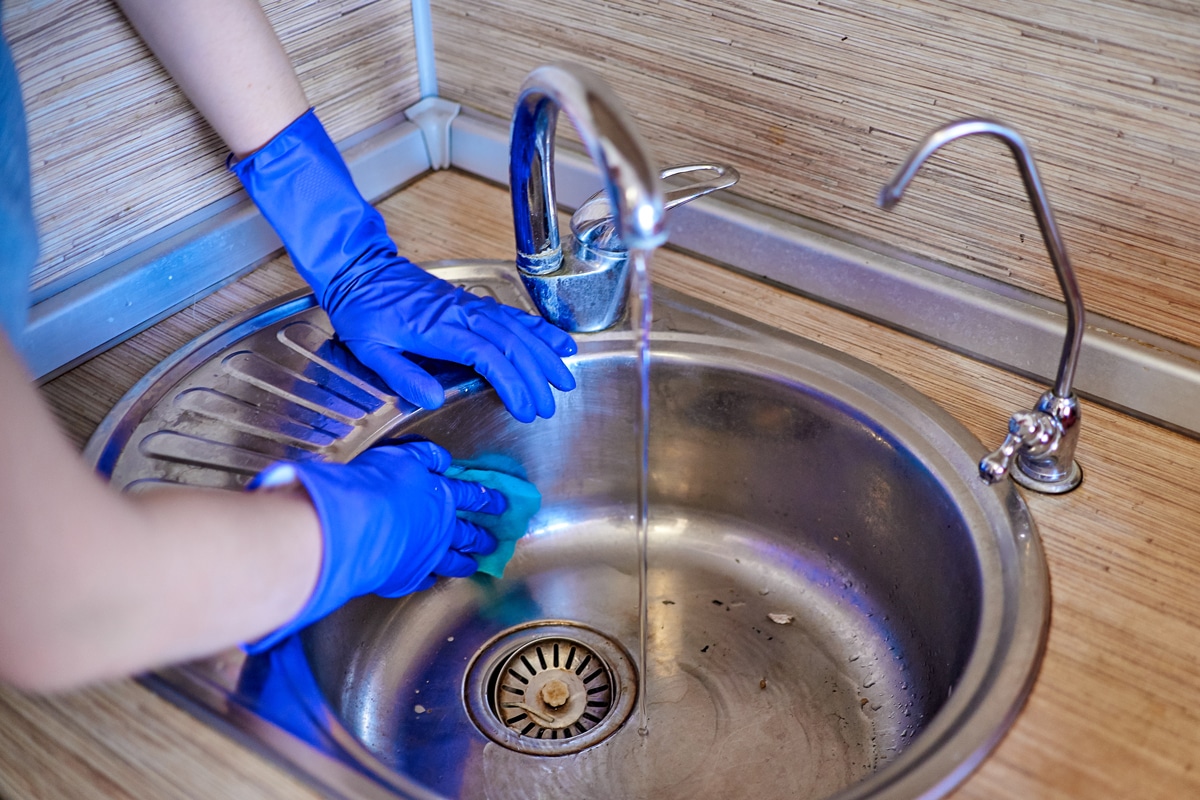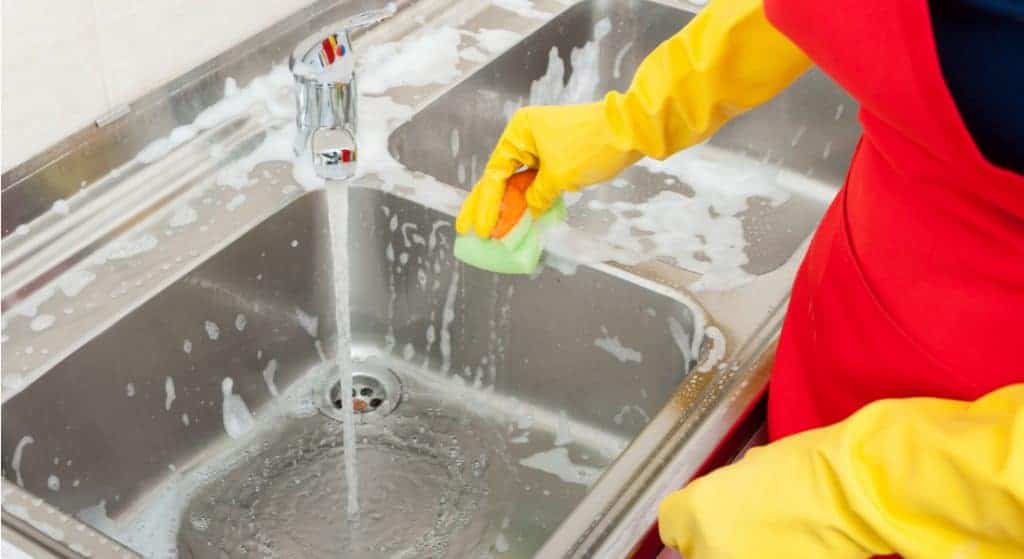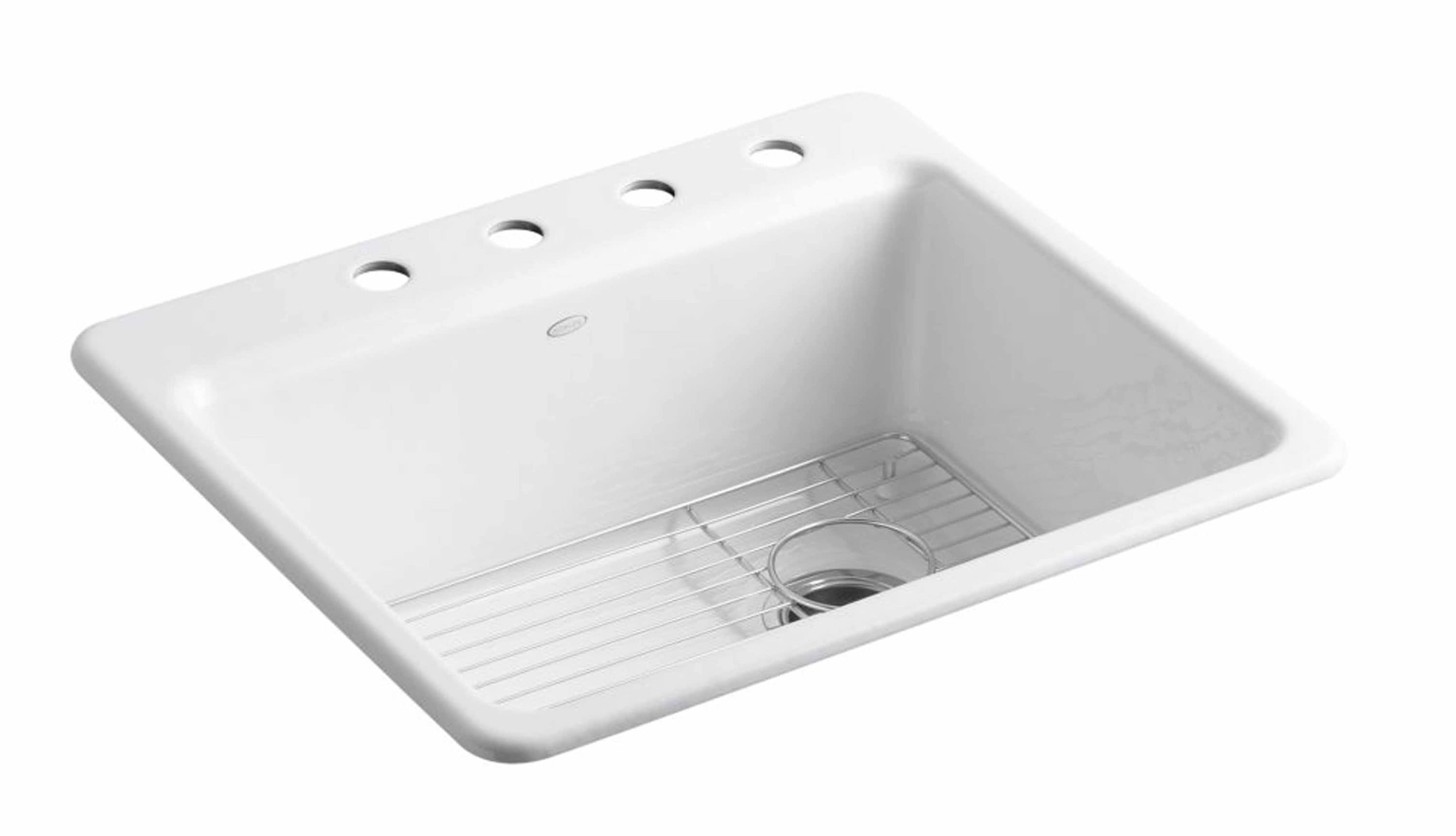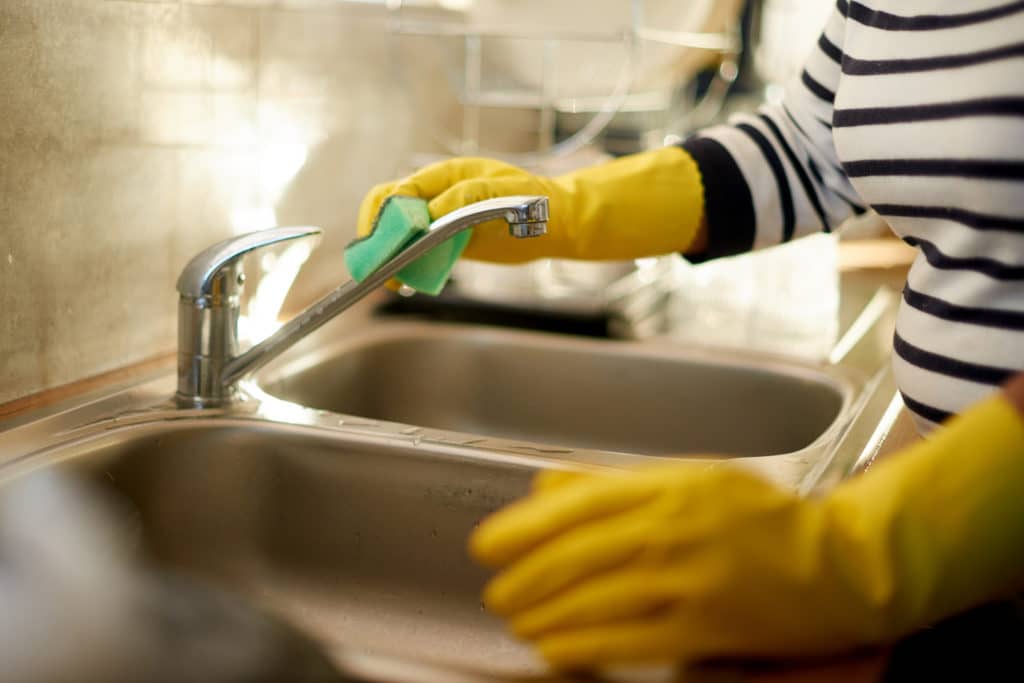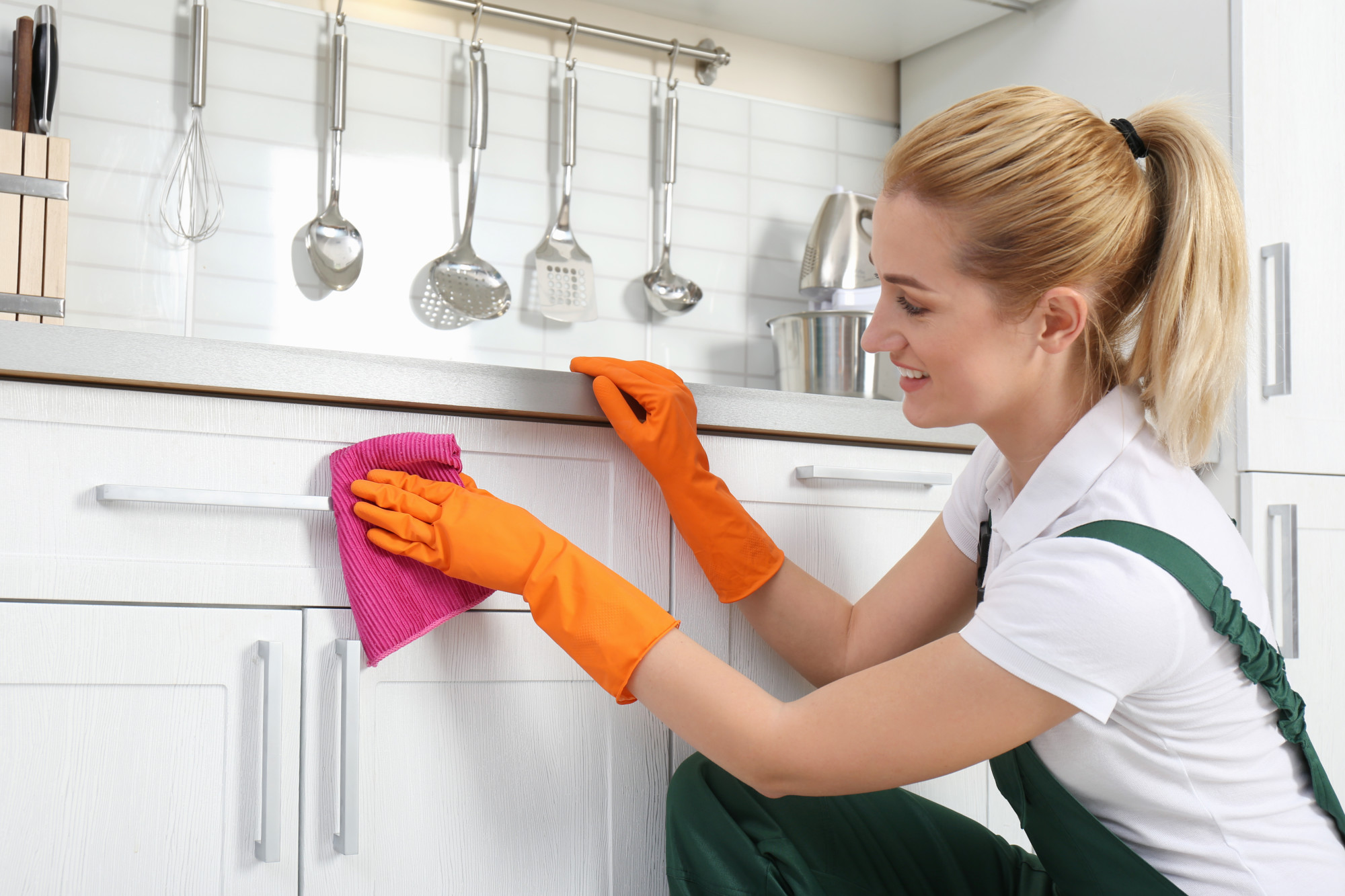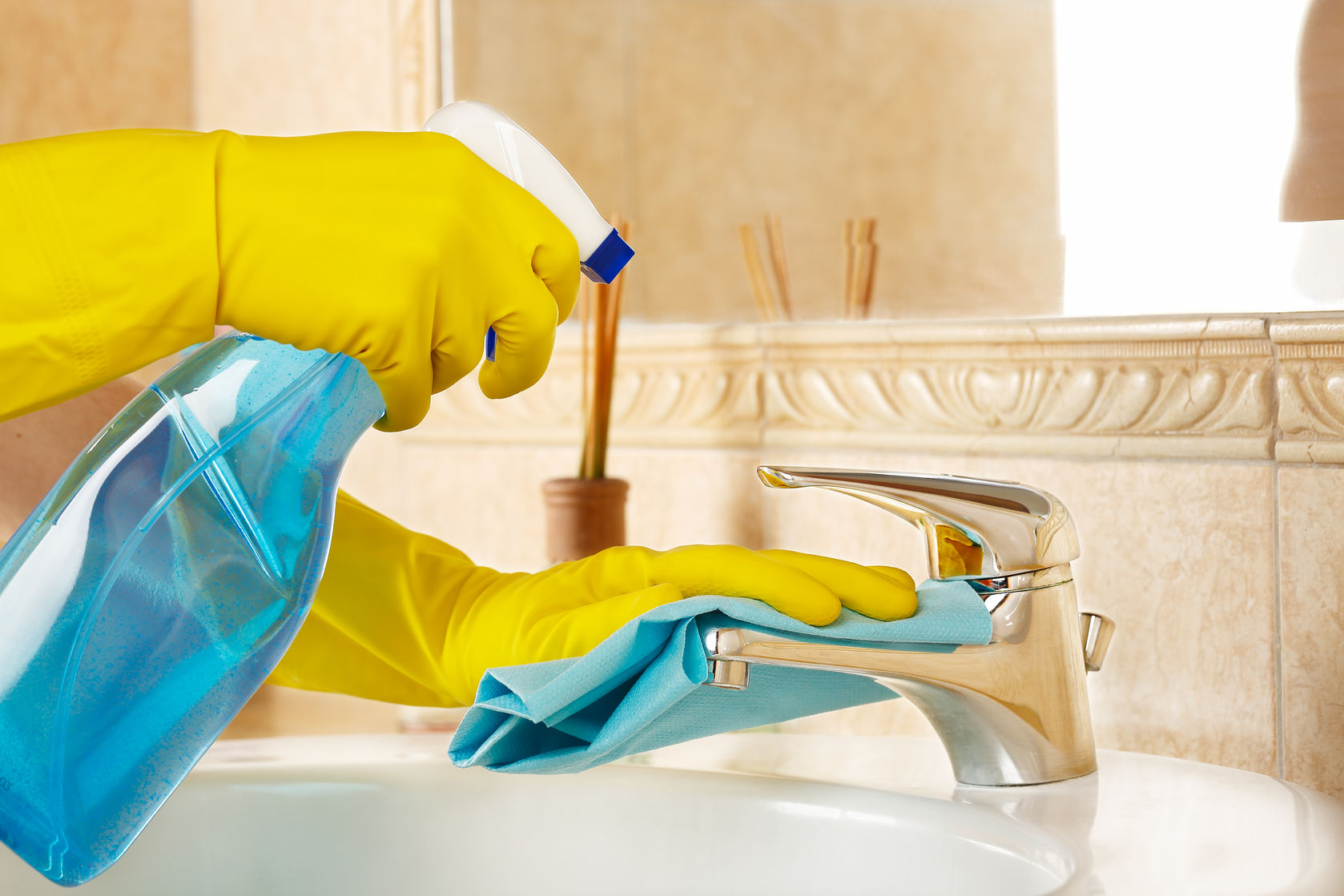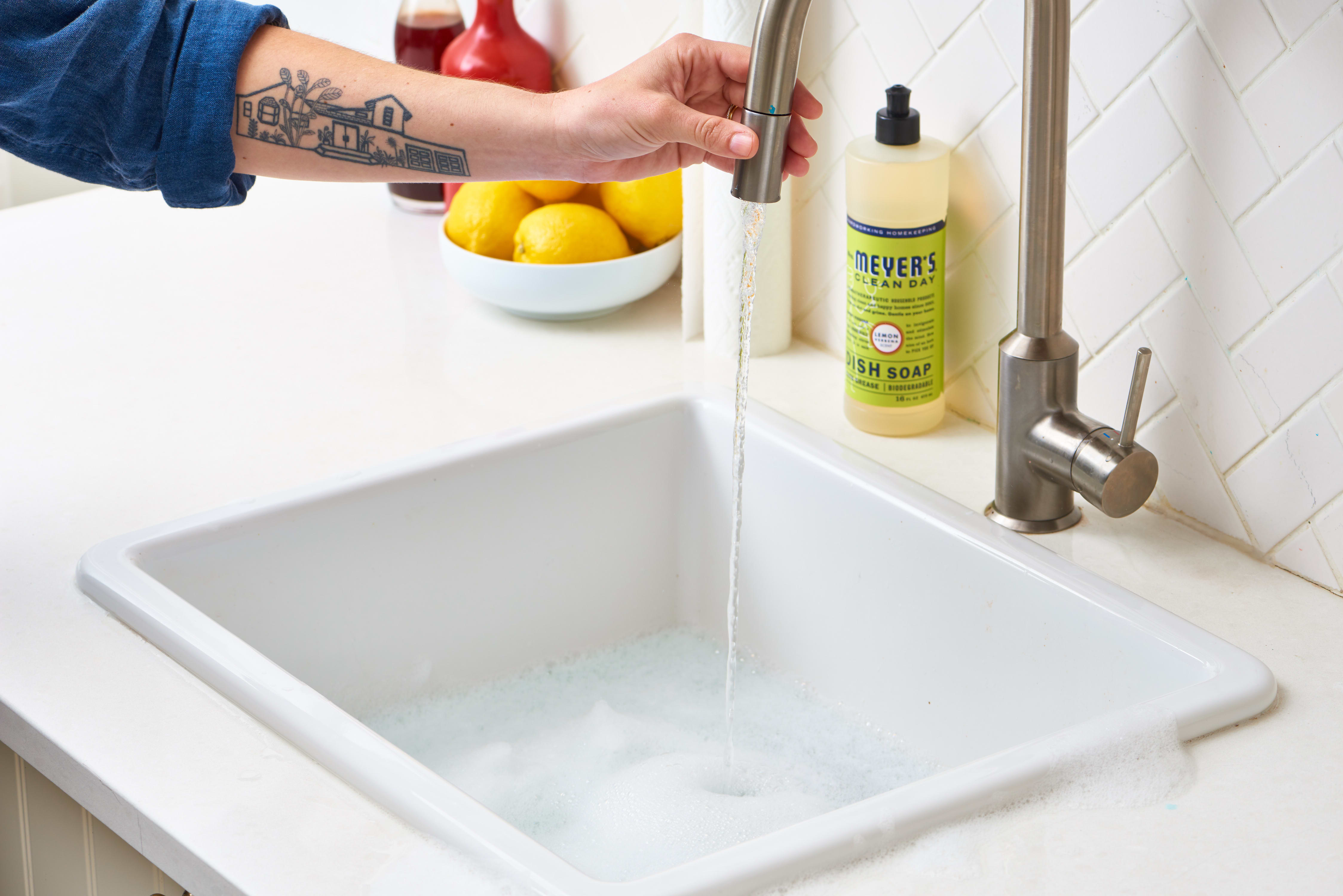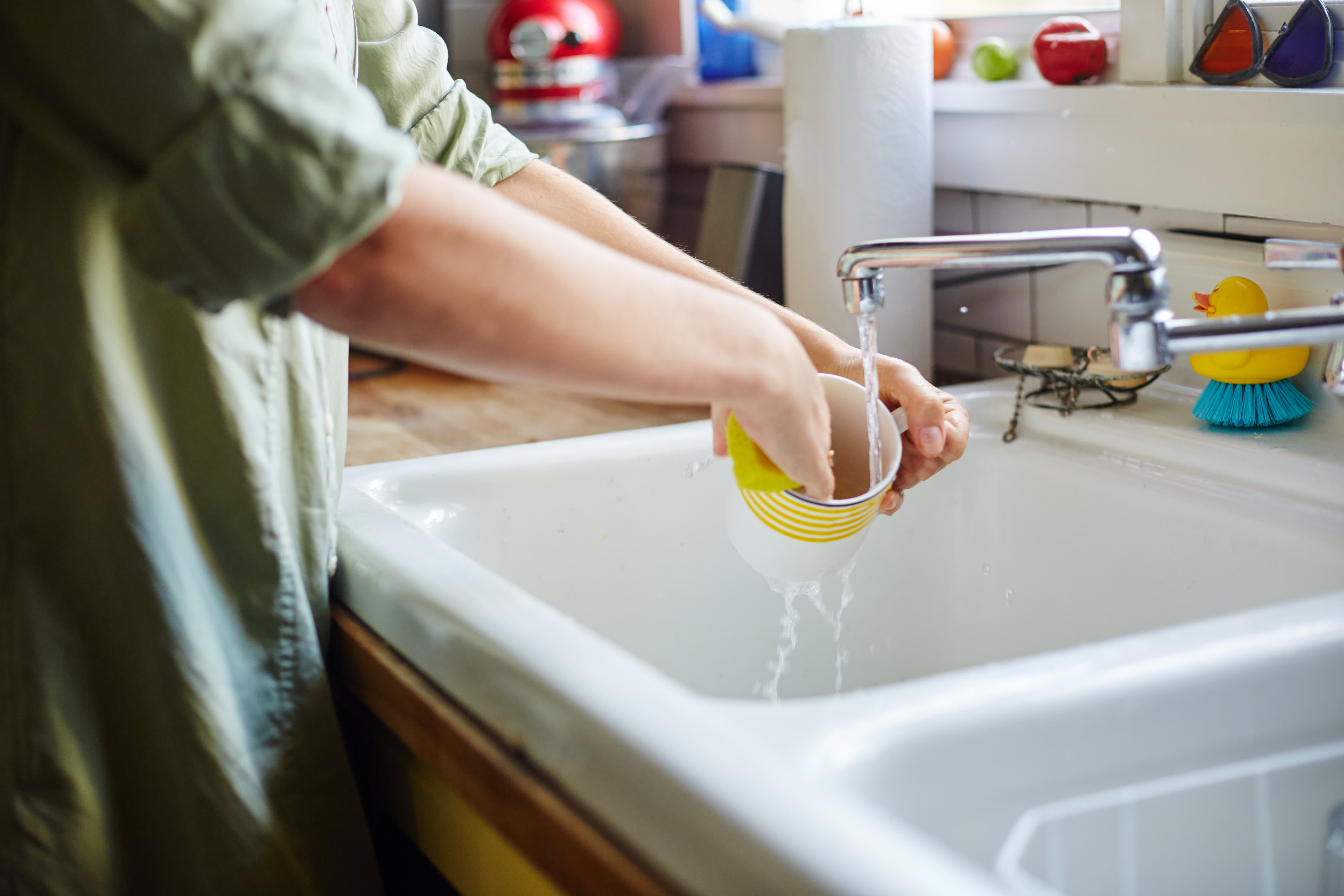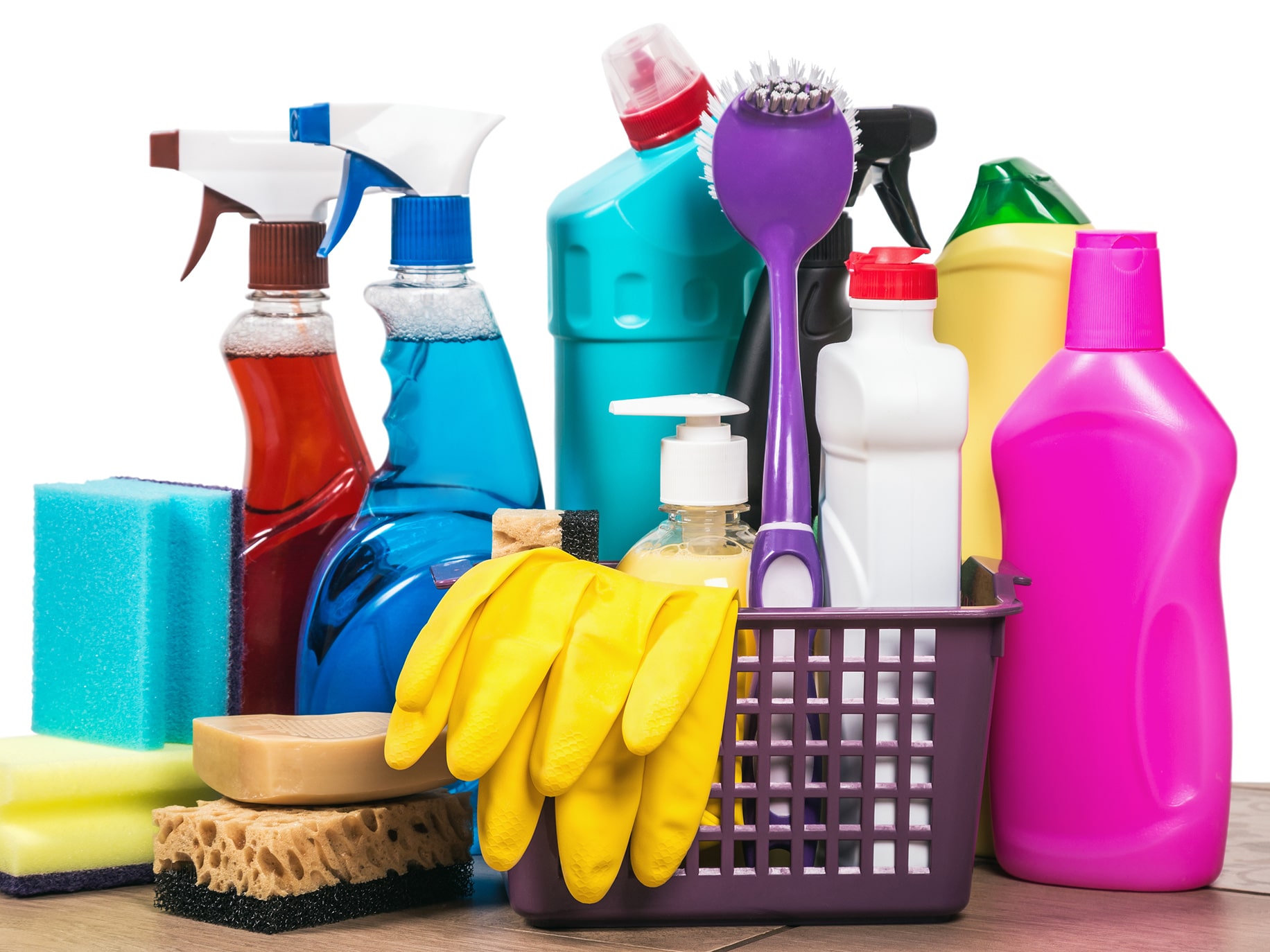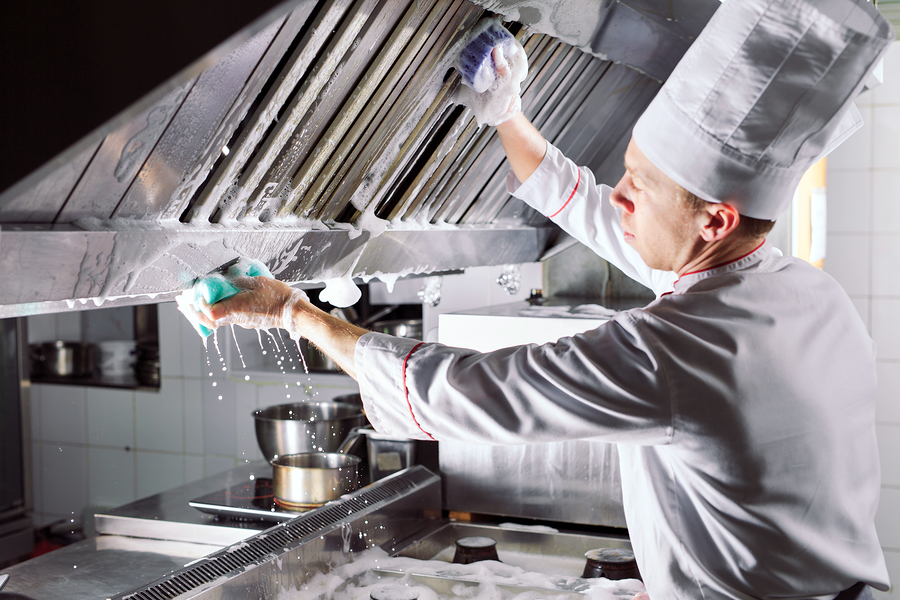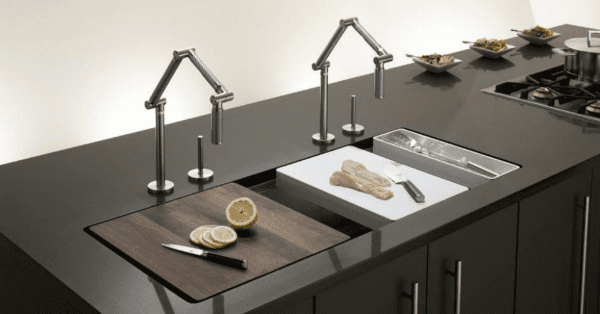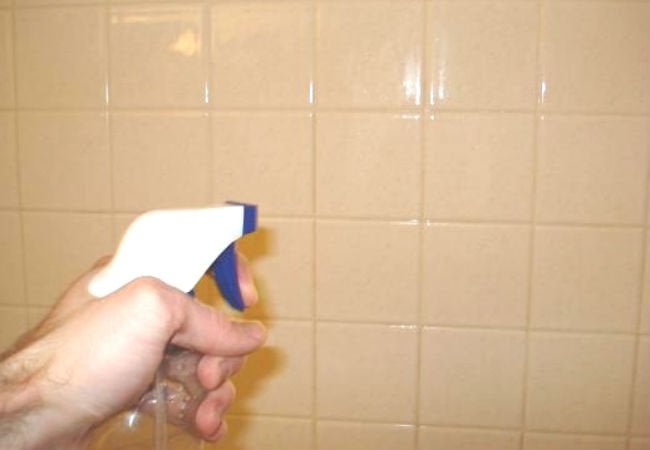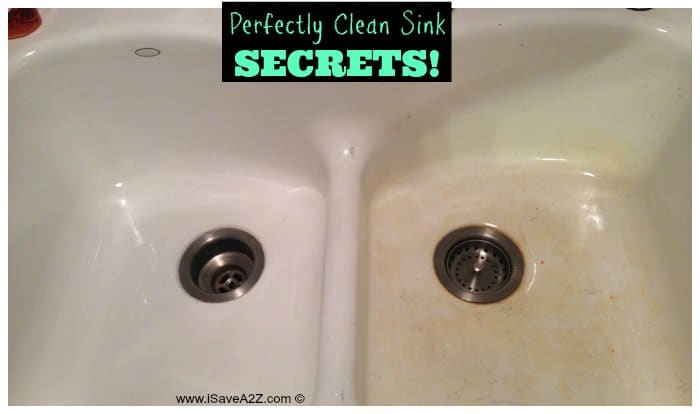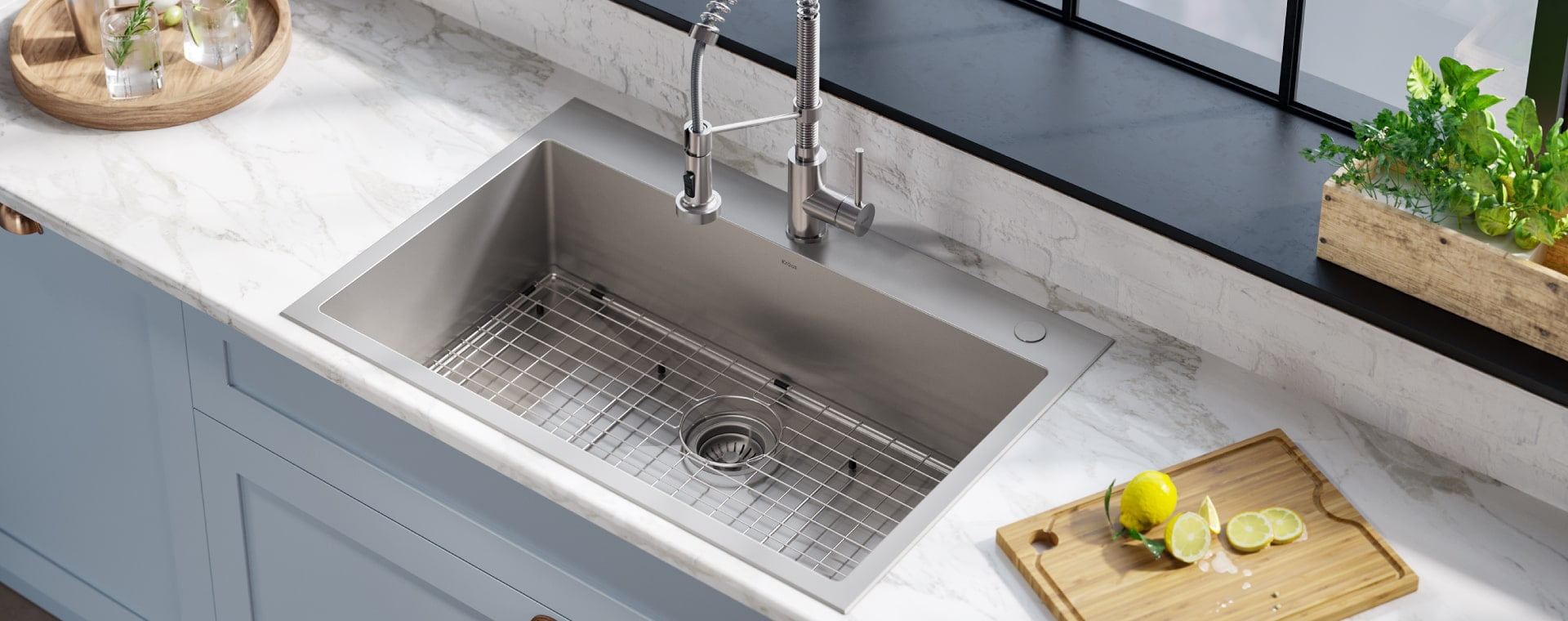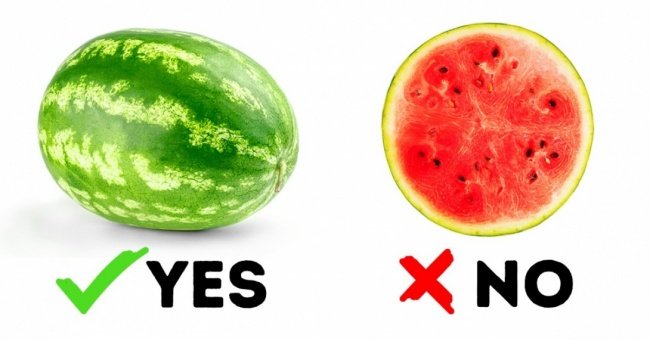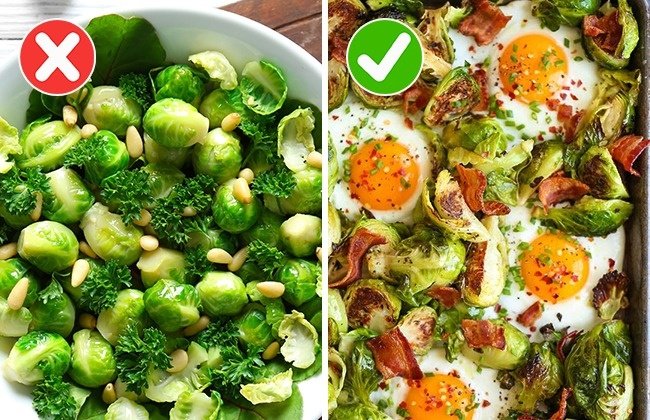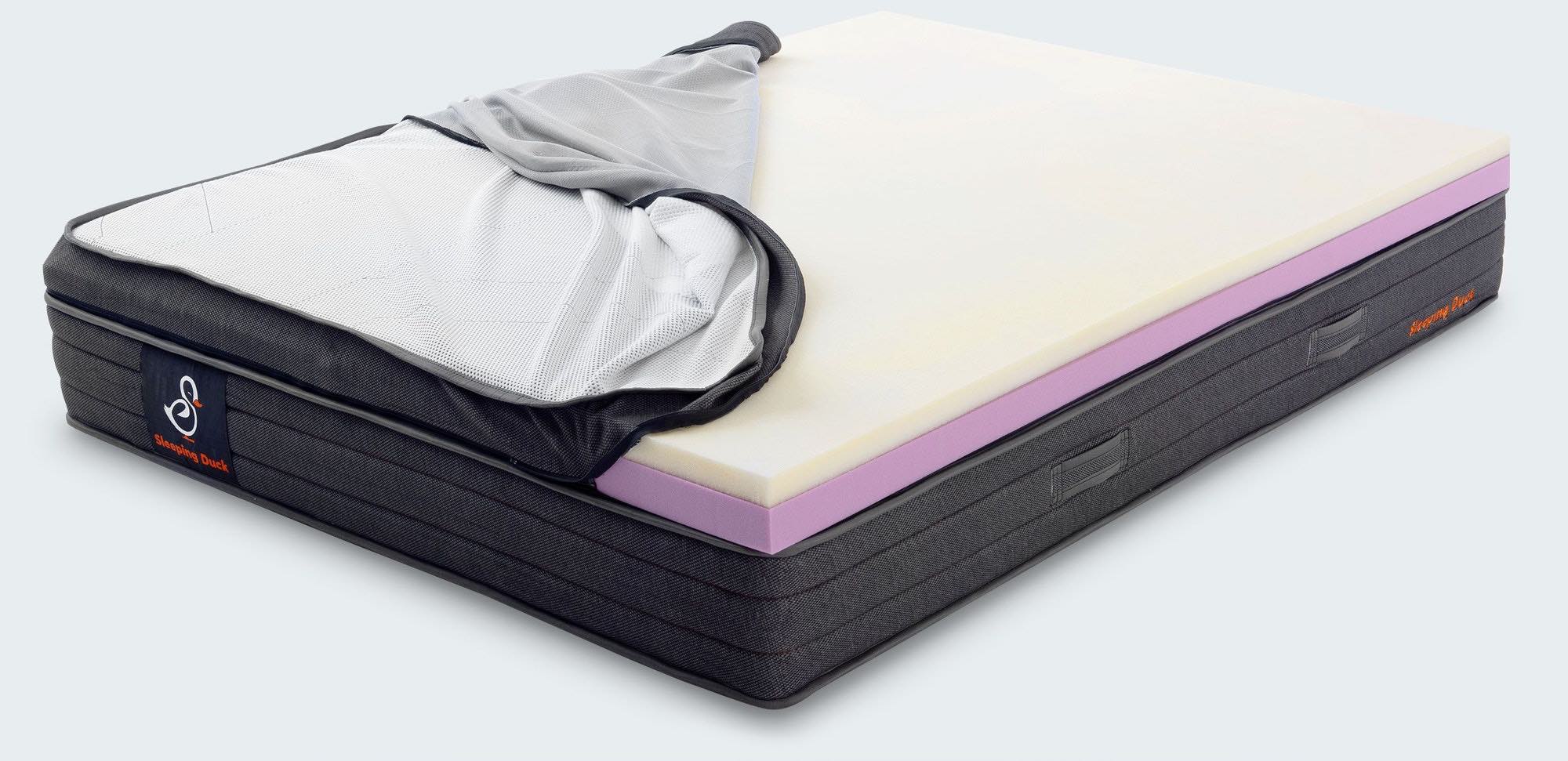Cleaning your kitchen sink is an essential task that should be done regularly to maintain a hygienic and pleasant kitchen environment. The sink is where we wash our dishes, fruits, and vegetables, and it can easily accumulate dirt, bacteria, and odors. Here are some steps to effectively clean your kitchen sink. Step 1: Start by removing any dishes or debris from the sink. You can also use a strainer to catch any food particles that may have gone down the drain. Step 2: Use a mixture of warm water and dish soap to scrub the sink with a sponge or cloth. Pay extra attention to areas with stains or buildup. Step 3: Rinse the sink thoroughly with warm water and dry it with a clean towel. Step 4: If your sink has a garbage disposal, you can freshen it up by putting some lemon or orange peels into the disposal and running it with cold water. Step 5: To disinfect your sink, you can use a solution of equal parts water and white vinegar. Spray it onto the sink and let it sit for a few minutes before rinsing it off with water. Step 6: For a sparkling finish, you can use a small amount of olive oil or baby oil on a cloth to polish the sink. This will also help prevent water spots.1. How to Clean a Kitchen Sink
Over time, showerheads can become clogged with mineral deposits and bacteria, affecting the water flow and quality of your shower. It's important to clean your shower head regularly to maintain good hygiene and a pleasant shower experience. Here's how to do it. Step 1: Remove the shower head from the wall or hose. If it's fixed, you can use a plastic bag filled with vinegar to cover the showerhead and secure it with a rubber band. Step 2: Soak the shower head in a solution of equal parts water and white vinegar for at least an hour. This will help dissolve any mineral buildup. Step 3: After soaking, use an old toothbrush or a small brush to scrub the shower head and remove any remaining buildup. Step 4: Rinse the shower head with water and wipe it dry with a clean cloth. Step 5: If there are still stubborn mineral deposits, you can use a toothpick or a needle to carefully unclog the shower head holes. Step 6: Reattach the shower head and run hot water through it for a few minutes to flush out any remaining residue. Step 7: For a fresh scent, you can mix a few drops of essential oils with water in a spray bottle and spritz it onto the shower head.2. How to Clean a Shower Head
If you prefer using natural, homemade cleaners for your kitchen sink and shower head, here's a simple and effective DIY recipe you can try. Ingredients:3. DIY Kitchen Sink and Shower Head Cleaner
If you're looking for more natural ways to clean your kitchen sink and shower head, here are some other ingredients you can use that are gentle yet effective. Baking Soda: This versatile ingredient is a powerful cleaner and deodorizer. You can sprinkle it onto the sink or shower head and scrub it with a damp sponge or cloth. Lemon Juice: The citric acid in lemon juice helps break down mineral deposits and can also remove stains and odors. You can use it as a natural bleach for white sinks or to freshen up the smell of your sink or shower head. Salt: Coarse salt is great for scrubbing away tough stains and buildup. You can mix it with lemon juice or water to create a paste for cleaning. Olive Oil: This oil is not only great for cooking, but it can also help polish and protect your sink or shower head. Just rub a small amount onto the surface with a cloth.4. Natural Ways to Clean a Kitchen Sink and Shower Head
If you prefer using commercial cleaners, there are many options available for cleaning your kitchen sink and shower head. Here are some of the best products to consider. CLR Calcium, Lime & Rust Remover: This powerful cleaner is specifically designed to remove tough mineral deposits and buildup from sinks and shower heads. Bar Keepers Friend Cleanser & Polish: This product is great for tackling tough stains and rust on stainless steel sinks and shower heads. Method Antibacterial Bathroom Cleaner: This all-purpose cleaner is made with plant-based ingredients and is safe for use on sinks and shower heads. Scrubbing Bubbles Mega Shower Foamer: This foaming cleaner is perfect for removing soap scum and mildew from shower heads and other surfaces in the bathroom. Mrs. Meyer's Clean Day Multi-Surface Everyday Cleaner: This cleaner is made with essential oils and is safe for use on sinks and shower heads. It also comes in various scents to leave a pleasant aroma behind.5. Best Products for Cleaning Kitchen Sinks and Shower Heads
Regular cleaning is key to maintaining a clean and hygienic kitchen sink and shower head. Here are some additional tips to help you keep them clean for longer. 1. Wipe down your sink and shower head after each use to prevent water spots and buildup. 2. Use a drain catcher to prevent food particles and debris from going down the drain and causing clogs. 3. Avoid using harsh chemicals or abrasive materials, as they can damage the surface of your sink and shower head. 4. For stubborn stains or buildup, try using a paste of baking soda and water and letting it sit for a few minutes before scrubbing and rinsing. 5. Regularly clean and replace your shower head filter if you have hard water to prevent mineral buildup. 6. Consider investing in a water softener to prevent hard water stains and buildup in your sink and shower head.6. Tips for Keeping Your Kitchen Sink and Shower Head Clean
The frequency of cleaning your kitchen sink and shower head may vary depending on your usage and water quality. However, it's generally recommended to clean them at least once a week to prevent buildup and maintain good hygiene. If you have hard water, you may need to clean them more frequently to prevent mineral deposits.7. How Often Should You Clean Your Kitchen Sink and Shower Head?
In addition to regular cleaning, it's important to deep clean your kitchen sink and shower head at least once a month to remove any hidden bacteria or buildup. You can use the methods and products mentioned above for a thorough deep clean.8. Deep Cleaning Your Kitchen Sink and Shower Head
Hard water stains can be tough to remove, but here's a simple method you can try using white vinegar and baking soda. Step 1: In a small bowl, mix equal parts white vinegar and baking soda until it forms a paste. Step 2: Apply the paste onto the stained areas of the sink or shower head and let it sit for 10-15 minutes. Step 3: Scrub the surface with a sponge or brush and rinse with water. Step 4: If the stains are still present, you can repeat the process or try using a commercial cleaner specifically designed for hard water stains.9. How to Remove Hard Water Stains from Kitchen Sinks and Shower Heads
When it comes to cleaning your kitchen sink and shower head, there are some common mistakes that you should avoid to prevent damage or ineffective cleaning. 1. Using abrasive materials or harsh chemicals that can scratch or damage the surface. 2. Not rinsing off cleaning products thoroughly, which can leave residue behind and attract more dirt and bacteria. 3. Using hot water to clean a shower head, as it can cause the plastic parts to warp or crack. 4. Not cleaning your sink and shower head regularly, leading to tougher stains and buildup that are harder to remove. 5. Using dirty or old sponges or cloths, which can spread bacteria instead of effectively cleaning. In conclusion, keeping your kitchen sink and shower head clean is not only important for maintaining a hygienic and pleasant environment, but it also helps prolong their lifespan. With these tips and methods, you can easily and effectively clean them using natural ingredients or commercial products. Remember to also regularly clean and replace your sponges and cloths, and avoid common mistakes that can damage or hinder the cleaning process. Happy cleaning!10. Common Mistakes to Avoid When Cleaning Kitchen Sinks and Shower Heads
Clean Kitchen Sink & Shower Head for a Sparkling House Design

Importance of a Clean Kitchen Sink and Shower Head
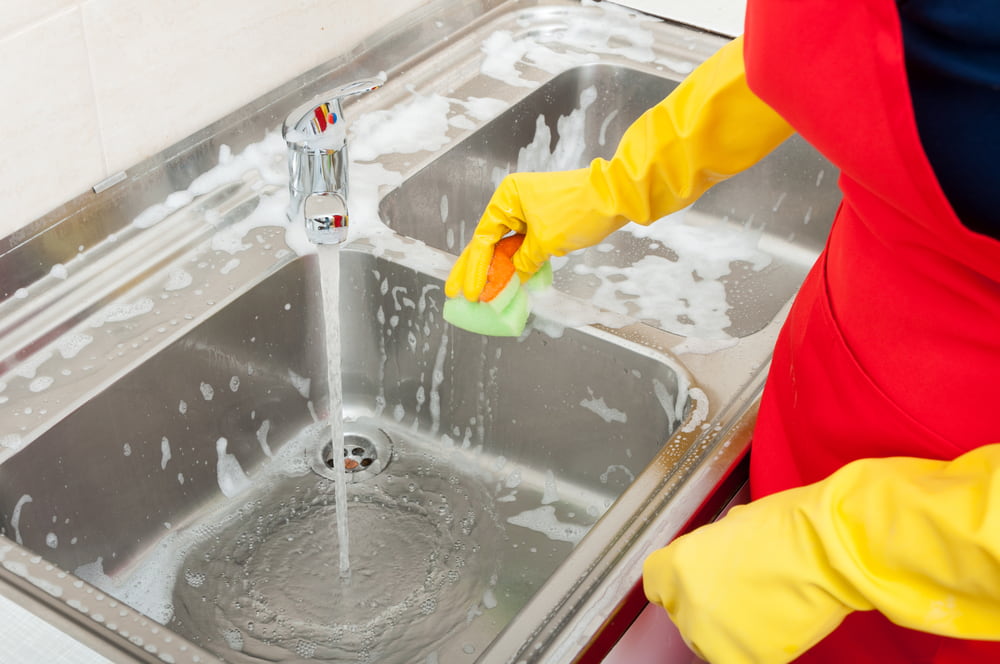 A clean and well-maintained kitchen sink and shower head are essential for maintaining a hygienic and visually appealing house design. These are some of the most frequently used fixtures in a household, and they can easily accumulate dirt, grime, and bacteria if not cleaned regularly. Not only can a dirty kitchen sink and shower head be unpleasant to look at, but they can also pose a health hazard to you and your family. Therefore, it is crucial to make cleaning these fixtures a regular part of your household cleaning routine.
A clean and well-maintained kitchen sink and shower head are essential for maintaining a hygienic and visually appealing house design. These are some of the most frequently used fixtures in a household, and they can easily accumulate dirt, grime, and bacteria if not cleaned regularly. Not only can a dirty kitchen sink and shower head be unpleasant to look at, but they can also pose a health hazard to you and your family. Therefore, it is crucial to make cleaning these fixtures a regular part of your household cleaning routine.
How to Clean Your Kitchen Sink
 To start, remove any dishes or debris from the sink and give it a quick rinse with warm water. Next, sprinkle baking soda all over the sink, including the sides and bottom.
Baking soda
is a natural cleaning agent that helps to break down dirt and grime without damaging the sink's surface. Let the baking soda sit for a few minutes before using a scrub brush or sponge to gently scrub the sink in a circular motion. You can also add a few drops of
lemon
or
vinegar
for extra cleaning power and a refreshing scent. Rinse the sink thoroughly with warm water and dry it with a clean cloth to reveal a shiny and clean surface.
To start, remove any dishes or debris from the sink and give it a quick rinse with warm water. Next, sprinkle baking soda all over the sink, including the sides and bottom.
Baking soda
is a natural cleaning agent that helps to break down dirt and grime without damaging the sink's surface. Let the baking soda sit for a few minutes before using a scrub brush or sponge to gently scrub the sink in a circular motion. You can also add a few drops of
lemon
or
vinegar
for extra cleaning power and a refreshing scent. Rinse the sink thoroughly with warm water and dry it with a clean cloth to reveal a shiny and clean surface.
How to Clean Your Shower Head
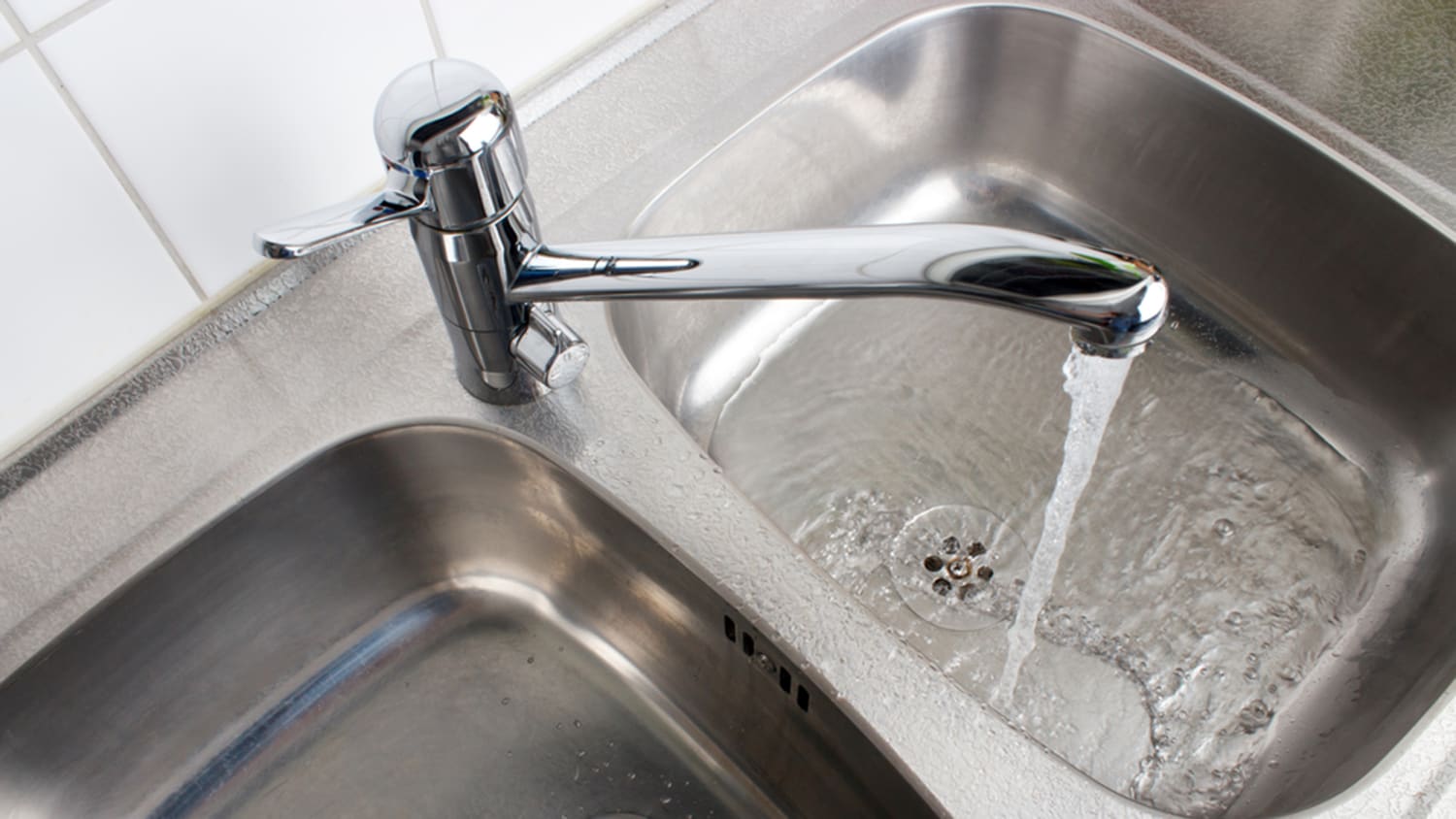 Cleaning your shower head is just as important to maintain a clean and hygienic bathroom. To begin, fill a plastic bag with
white vinegar
and
water
in equal parts. Place the bag over the shower head, making sure that the head is fully submerged in the solution. Secure the bag with a rubber band and let it sit for at least 30 minutes. The
vinegar
will help to dissolve any mineral deposits and bacteria that may have accumulated in the shower head. After soaking, remove the bag and scrub the shower head with a toothbrush to remove any remaining residue. Finally, turn on the shower and let the water run for a few minutes to flush out any remaining solution.
Cleaning your shower head is just as important to maintain a clean and hygienic bathroom. To begin, fill a plastic bag with
white vinegar
and
water
in equal parts. Place the bag over the shower head, making sure that the head is fully submerged in the solution. Secure the bag with a rubber band and let it sit for at least 30 minutes. The
vinegar
will help to dissolve any mineral deposits and bacteria that may have accumulated in the shower head. After soaking, remove the bag and scrub the shower head with a toothbrush to remove any remaining residue. Finally, turn on the shower and let the water run for a few minutes to flush out any remaining solution.
Maintaining a Clean Kitchen Sink and Shower Head
 Regular cleaning is the key to maintaining a clean kitchen sink and shower head. Make it a habit to wipe down the sink after each use and regularly deep clean it once a week. For the shower head, you can also prevent mineral buildup by wiping it down with a dry cloth after each use. Additionally, you can use a water softener or install a
shower filter
to help minimize mineral deposits.
In conclusion, a clean kitchen sink and shower head are crucial for a sparkling and hygienic house design. Regular cleaning using natural ingredients like
baking soda
and
vinegar
can help to keep these fixtures in top condition. So add these tasks to your cleaning routine and enjoy a clean and beautiful kitchen and bathroom.
Regular cleaning is the key to maintaining a clean kitchen sink and shower head. Make it a habit to wipe down the sink after each use and regularly deep clean it once a week. For the shower head, you can also prevent mineral buildup by wiping it down with a dry cloth after each use. Additionally, you can use a water softener or install a
shower filter
to help minimize mineral deposits.
In conclusion, a clean kitchen sink and shower head are crucial for a sparkling and hygienic house design. Regular cleaning using natural ingredients like
baking soda
and
vinegar
can help to keep these fixtures in top condition. So add these tasks to your cleaning routine and enjoy a clean and beautiful kitchen and bathroom.


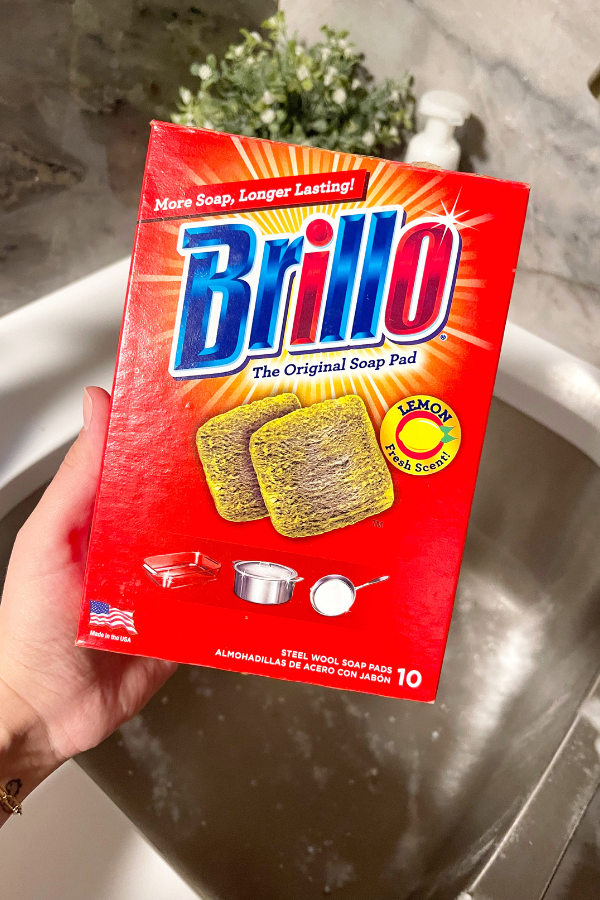
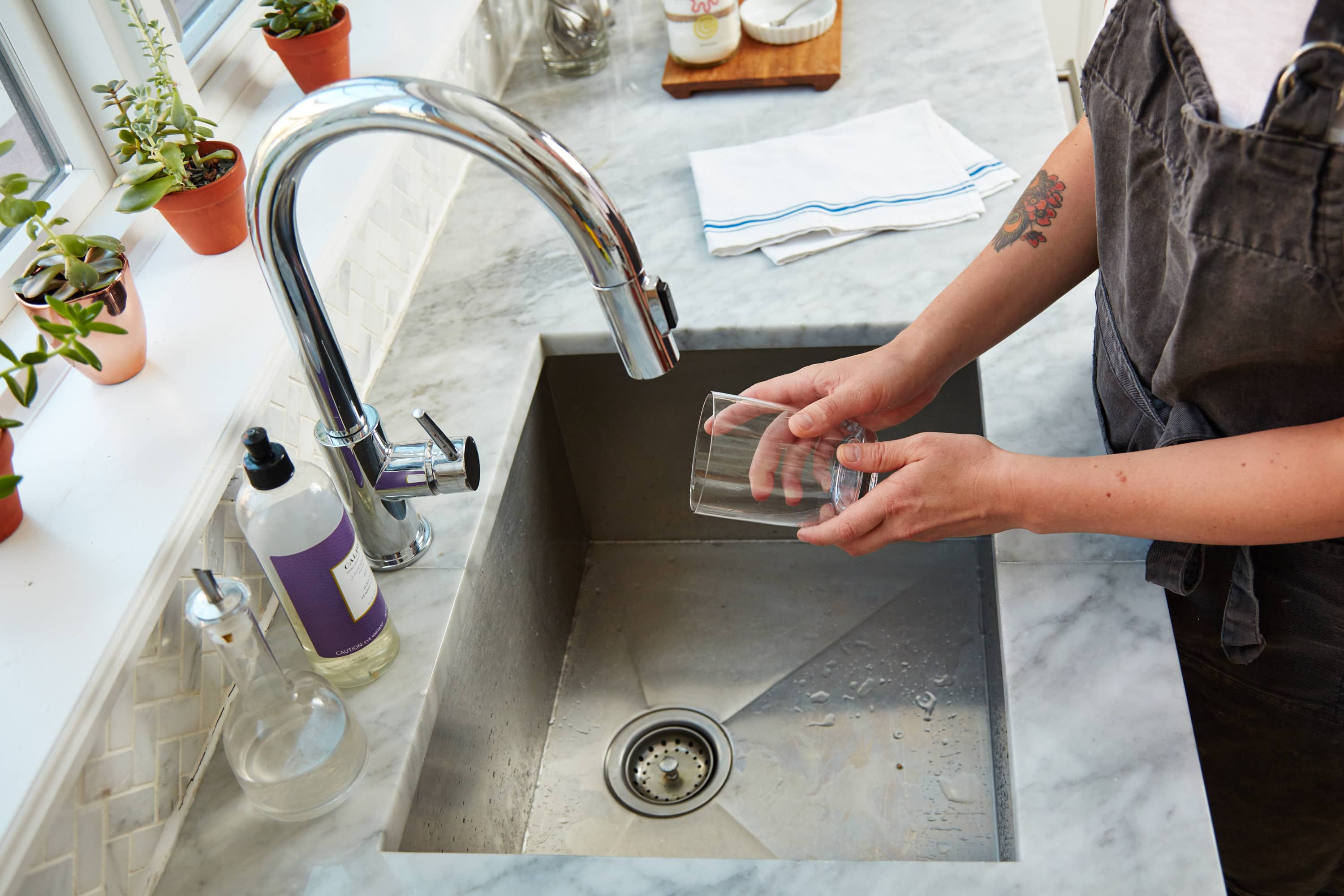
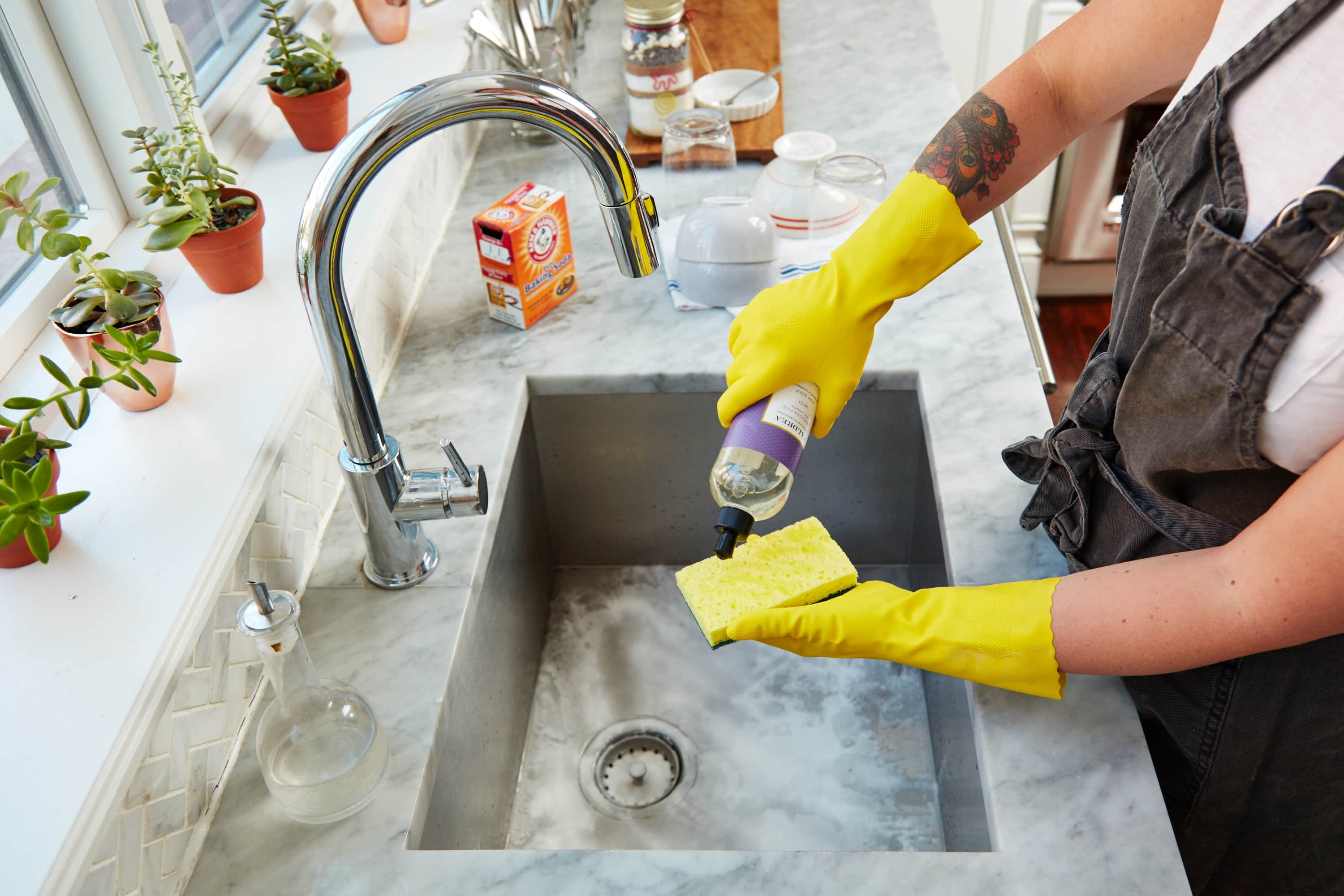
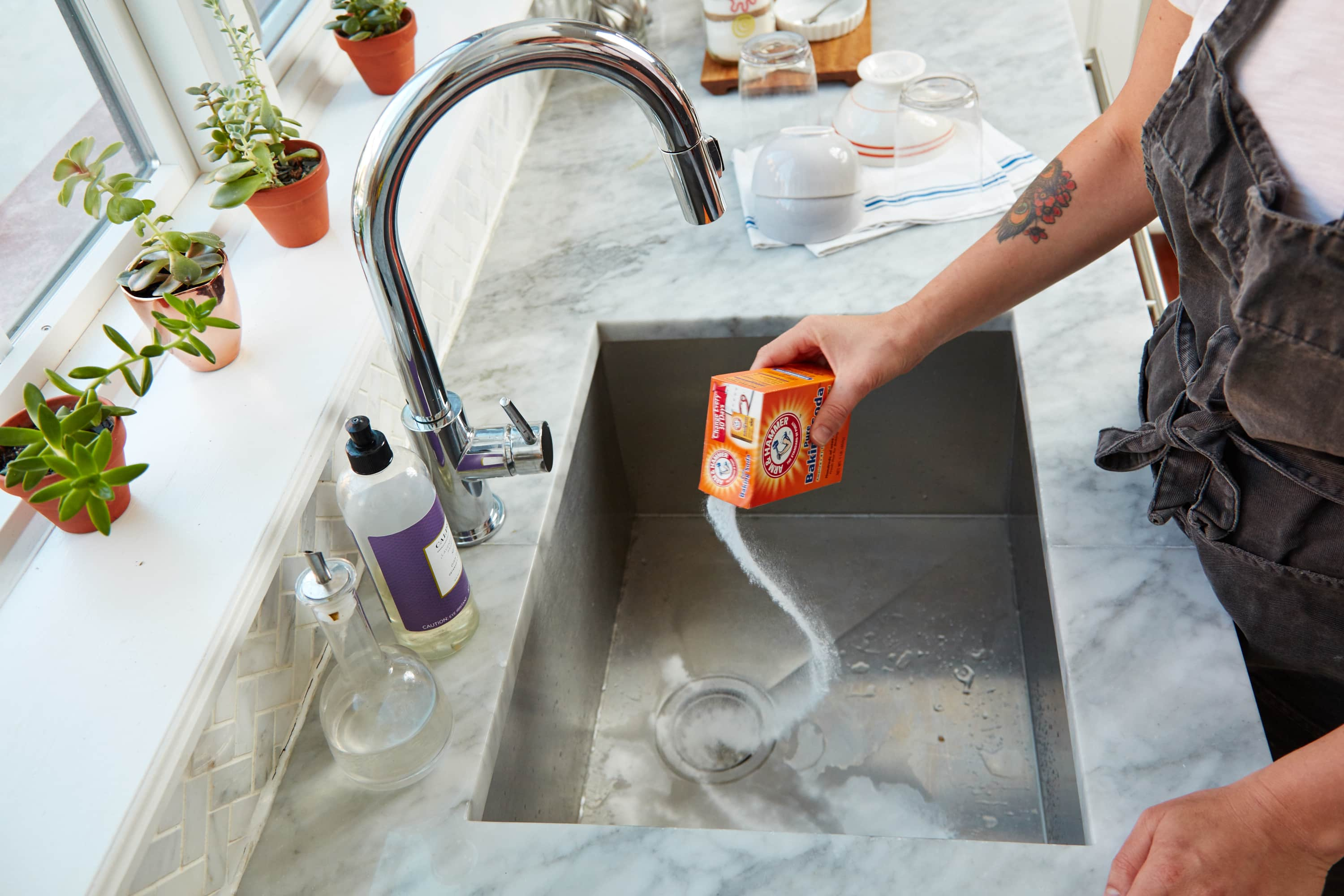


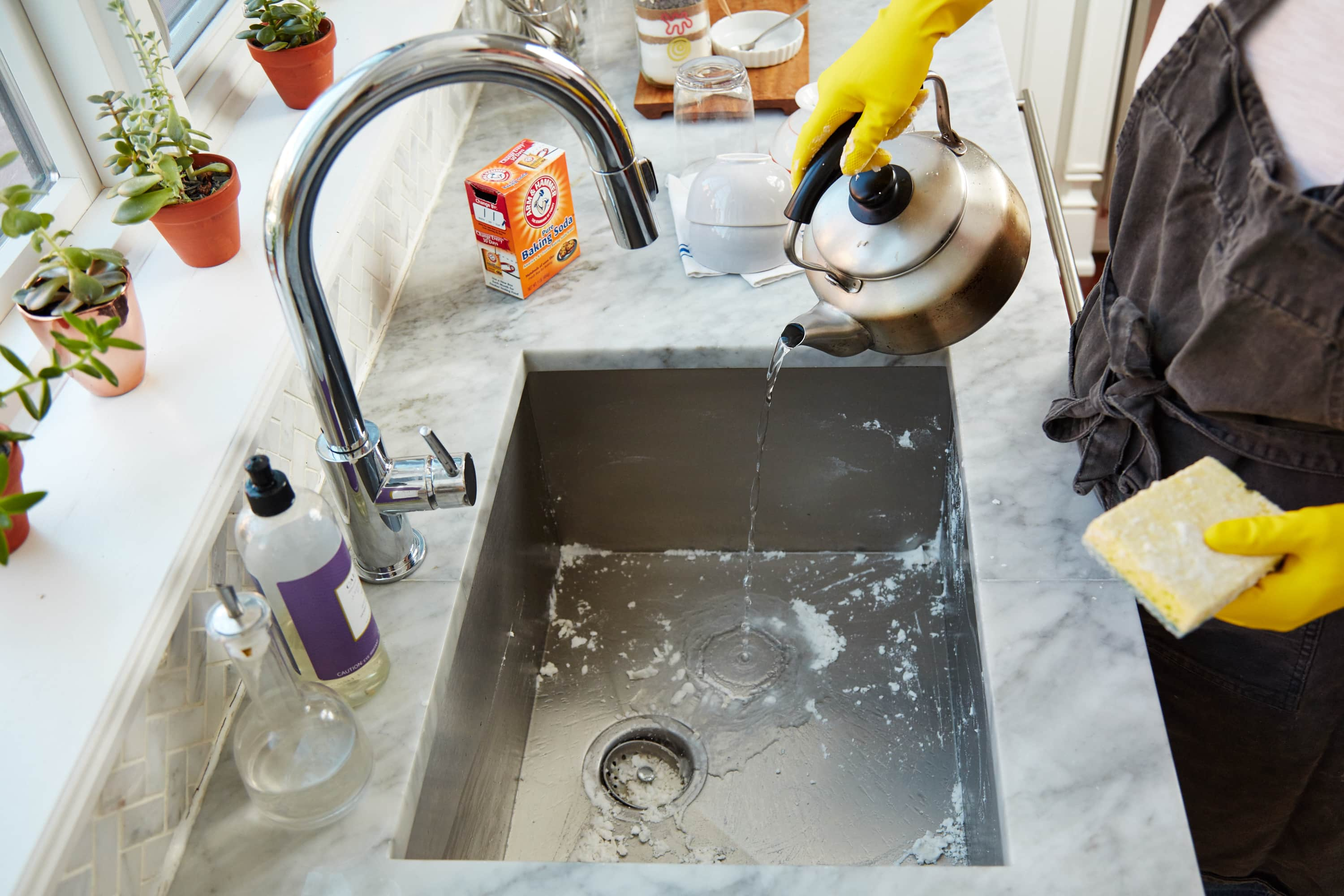
:max_bytes(150000):strip_icc()/the-best-method-for-cleaning-your-kitchen-sink-5649473-04-13cf66fa7dba4c07a2f13524cb82bbe3.jpg)
:max_bytes(150000):strip_icc()/how-to-clean-a-kitchen-sink-and-drain-02-5660035-7a630bc36f2c401bbe412bbe85937ff3.jpg)
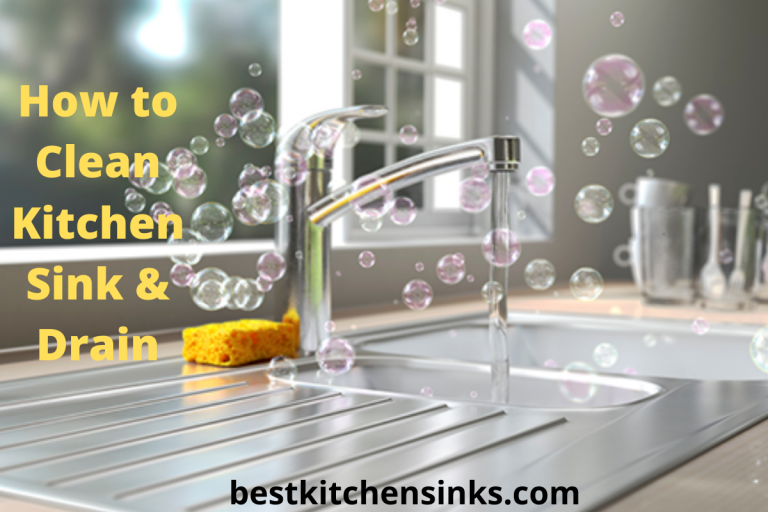
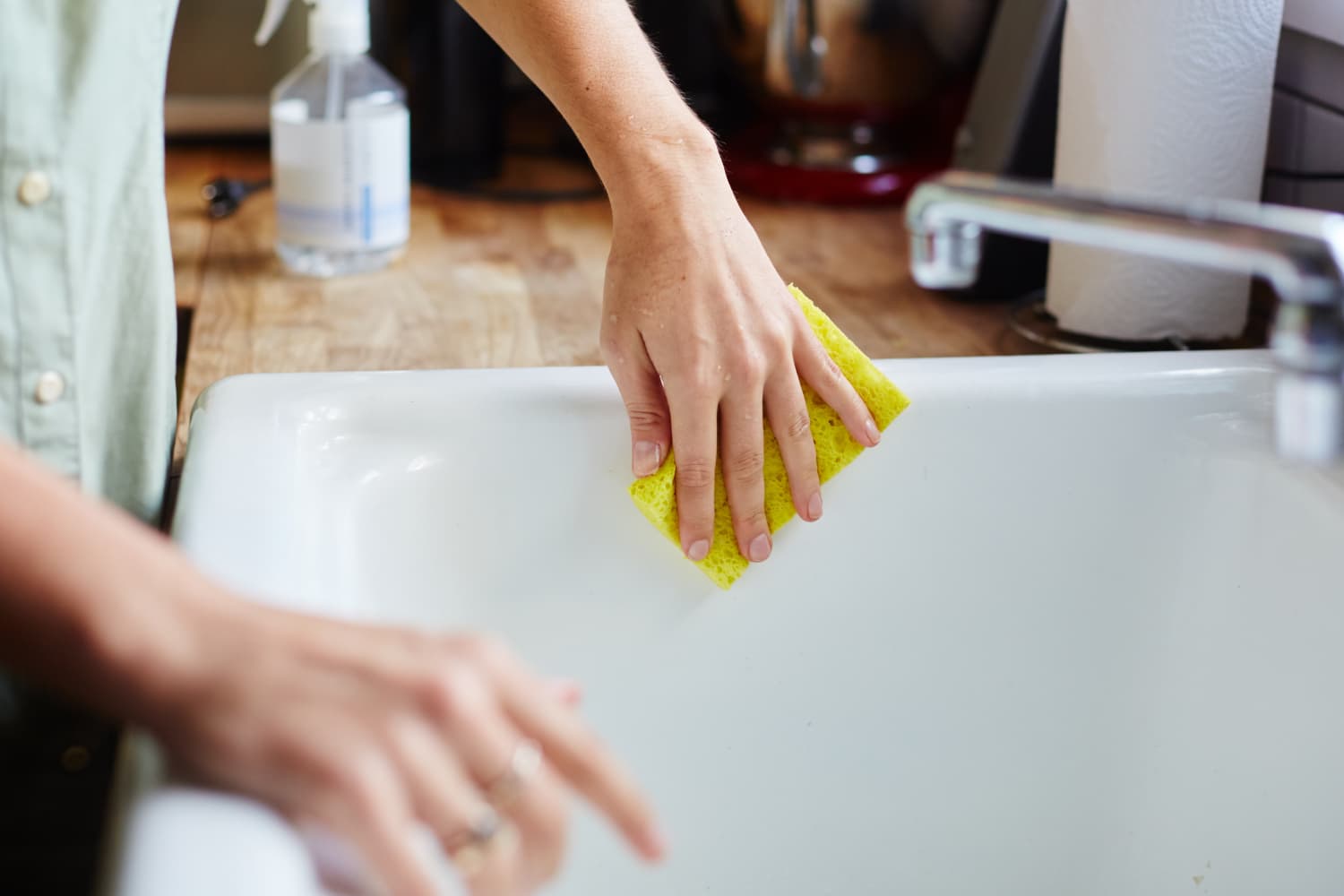



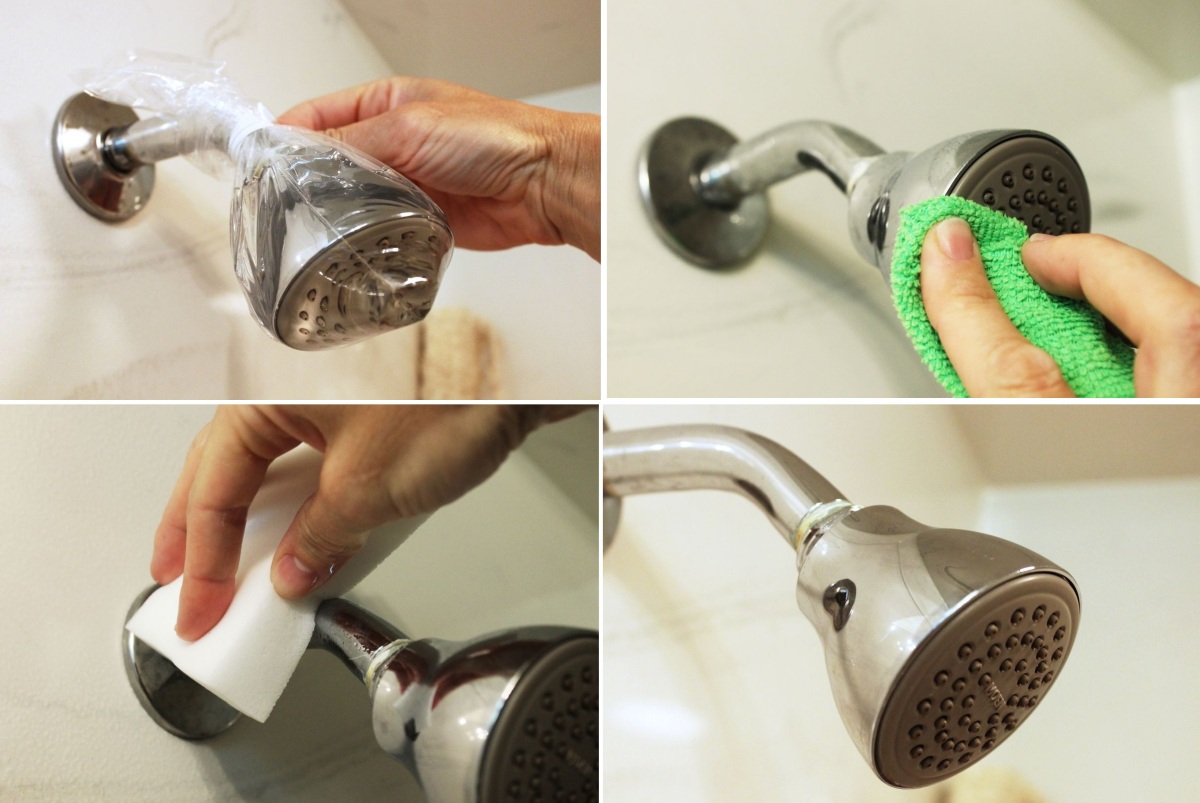
:max_bytes(150000):strip_icc()/how-to-clean-shower-head-2000-1e8ca56bc66b421e87db5ed3825f89ce.jpg)


